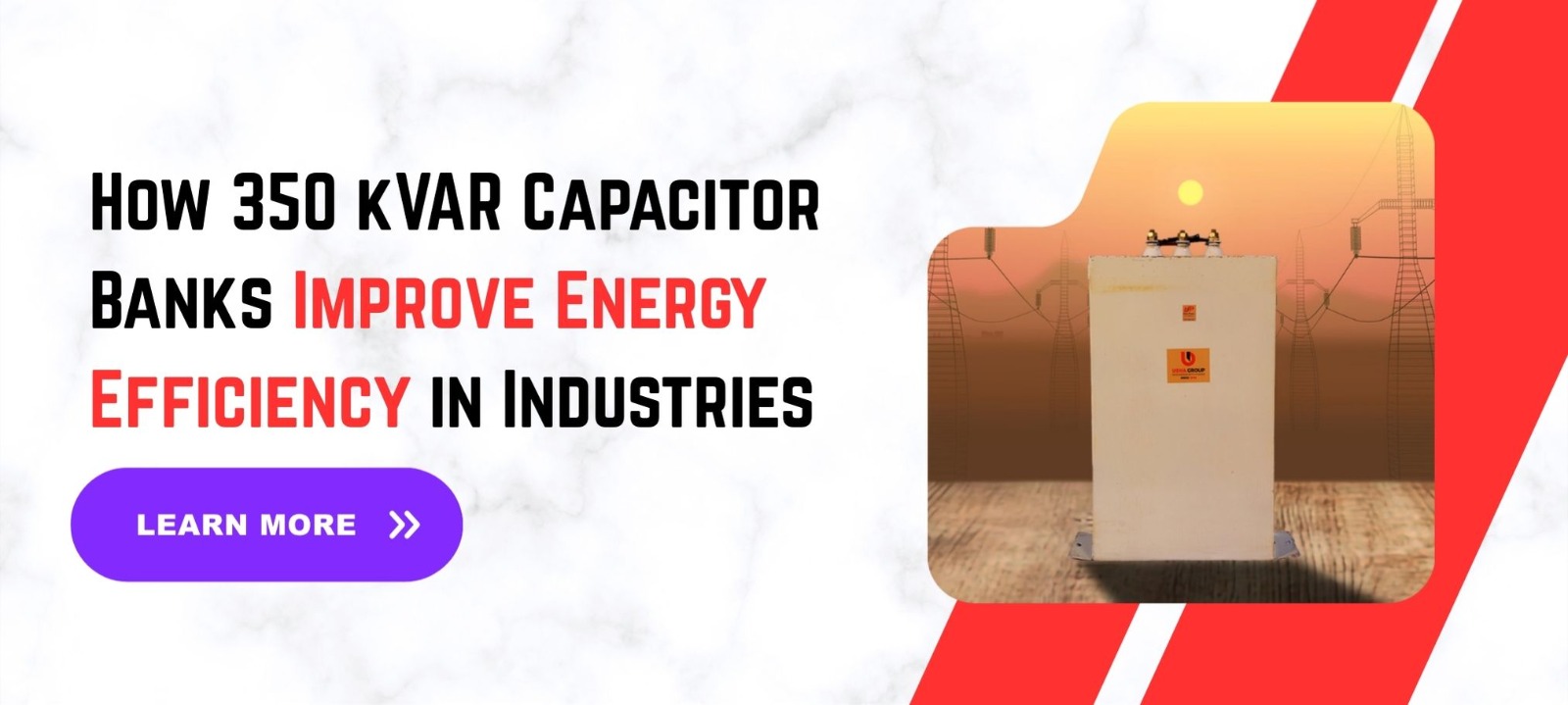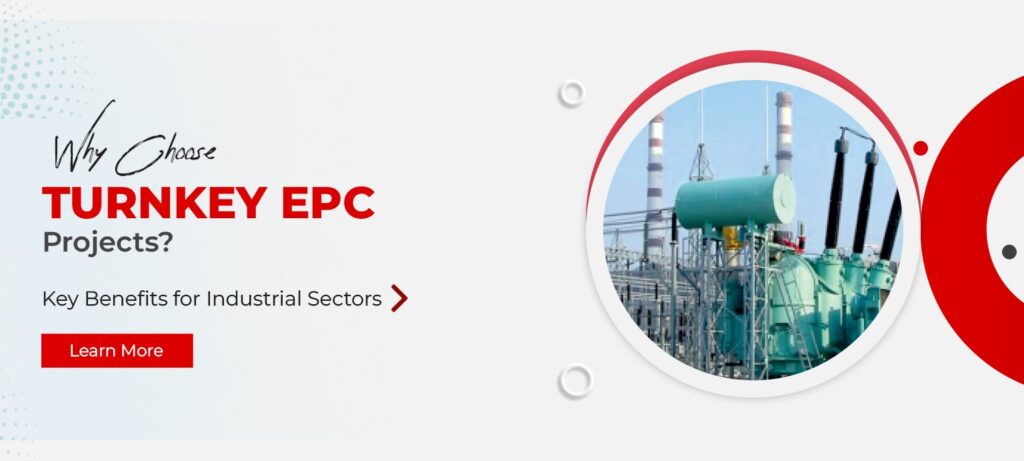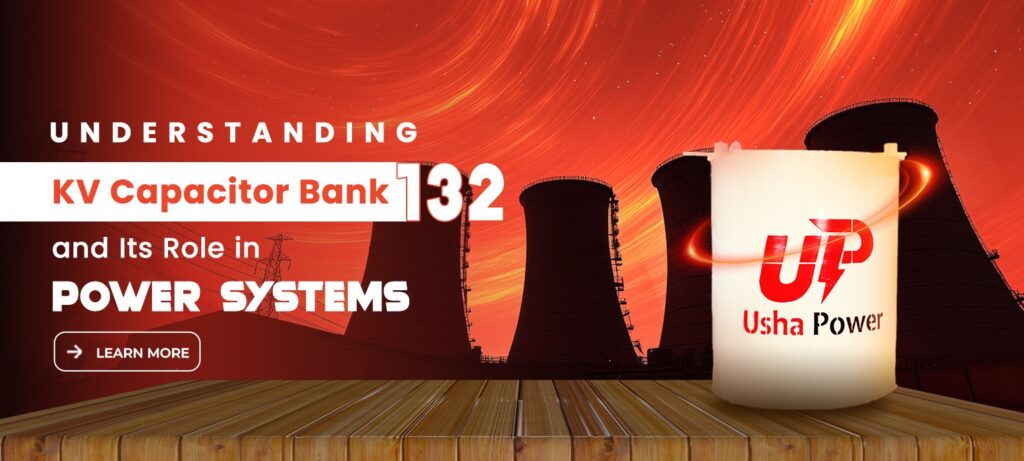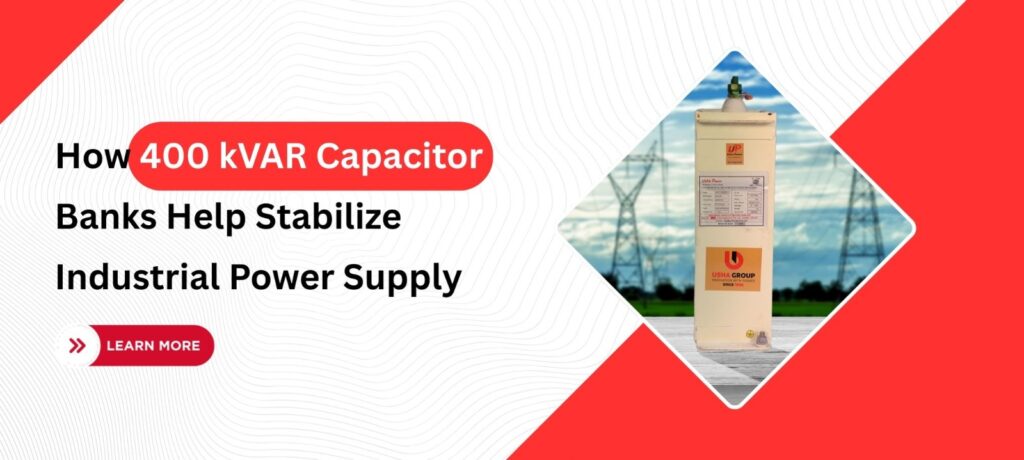In the industrial sector, efficient use of electrical energy is crucial for maintaining operational cost-effectiveness and ensuring reliable production. Power factor plays a significant role in determining how efficiently electrical power is being utilized. A poor power factor leads to increased current flow, higher losses in the distribution network, and unnecessary penalties from electricity providers. To address this challenge, industries often deploy capacitor banks, specifically sized to meet their reactive power demands. One such commonly used configuration is the 350 kVAR capacitor bank, which is designed to provide reactive power compensation in medium to large industrial facilities. It helps improve the power factor, reduce energy losses, and relieve the load on transformers and cables. By supplying the reactive component locally, the system reduces the burden on the main electrical supply and ensures a more balanced and efficient distribution of electrical energy throughout the facility.
Understanding Reactive Power and Power Factor
Before exploring the role of a 350 kVAR capacitor bank, it is important to understand the concept of reactive power. Reactive power does not perform any actual work but is essential for maintaining voltage levels across the power system. Many industrial loads, such as motors and transformers, consume reactive power. This creates a lag between voltage and current, lowering the overall power factor. A low power factor means the industry must draw more current to supply the same active power, which leads to higher energy losses and inefficient operation of electrical systems. Capacitor banks are installed to counteract this issue by supplying leading reactive power, which balances the lagging reactive power from inductive loads, thus improving the overall power factor.
What Is a 350 kVAR Capacitor Bank?
A 350 kVAR capacitor bank is a fixed or automatic set of capacitors installed in industrial electrical systems to compensate for reactive power. The term “kVAR” stands for kilovolt-ampere reactive, which is the unit of measurement for reactive power. A 350 kVAR rating indicates the capacity of the capacitor bank to offset inductive loads requiring 350 kVAR of reactive power compensation. These capacitor banks can be designed for both low and medium voltage systems, depending on the specific requirements of the facility. By installing a properly rated 350 kVAR capacitor bank, industries can maintain a near-unity power factor, reduce the apparent power demand from the utility, and avoid penalties for low power factor usage.
Benefits of Using a 350 kVAR Capacitor Bank in Industrial Systems
The benefits of using a 350 kVAR capacitor bank in industrial environments are multi-dimensional. First and foremost, the improvement in power factor leads to more efficient energy usage. When power factor is closer to unity, the current flowing through the electrical network is minimized, which reduces losses due to heating in conductors and equipment. Secondly, capacitor banks reduce the load on distribution transformers and cables, extending their operational lifespan. Thirdly, they help avoid power factor penalties imposed by utilities, thus leading to cost savings. Furthermore, better voltage regulation achieved through reactive power compensation contributes to stable operation of machinery and electronic controls. Overall, this translates to improved reliability, reduced maintenance, and enhanced operational efficiency.
Placement and Integration of 350 kVAR Capacitor Banks
For maximum efficiency, the placement of a 350 kVAR capacitor bank must be carefully planned. These banks are typically installed near the main distribution board or close to the load centers, where large inductive equipment is operating. Depending on the electrical load variation in the system, capacitor banks may be fixed (always in operation) or switched (controlled through contactors or automated relays based on demand). In some advanced setups, automatic power factor correction panels integrate capacitor banks with intelligent controllers that continuously monitor system parameters and adjust capacitor connection accordingly. This ensures that the reactive power compensation is optimized without leading to overcompensation, which could cause over-voltage or resonance issues.
Energy Efficiency Gains in Real-World Applications
In real-world industrial applications, the installation of a 350 kVAR capacitor bank has demonstrated measurable improvements in energy efficiency. For instance, a manufacturing plant with a poor power factor of 0.75 may be drawing significantly more current than necessary, leading to excessive losses and higher energy bills. After installing a 350 kVAR capacitor bank, the power factor may improve to 0.95 or higher. This improvement reduces line losses, optimizes transformer utilization, and minimizes heating in cables and switchgear. In high-energy-consuming sectors like steel production, cement manufacturing, and textile processing, such improvements translate into considerable annual energy savings and reduced carbon emissions. These efficiency gains also support corporate sustainability goals and regulatory compliance.
Considerations for Selection and Maintenance
Selecting the correct rating and configuration of a capacitor bank is essential. Engineers must assess the reactive power requirement of the facility using load analysis and power factor measurements. Oversizing or undersizing the capacitor bank can cause instability or insufficient compensation. The 350 kVAR capacitor bank should be chosen based on factors such as system voltage, harmonic levels, load profile, and existing infrastructure. Maintenance is another key aspect; although capacitor banks are generally robust, periodic inspections are necessary to check for insulation wear, terminal heating, or leakage. In addition, in systems where harmonic distortion is present, filters or detuned reactors should be included to protect the capacitor banks from damage.
Role in Grid Stability and Demand Reduction
Beyond individual plant-level benefits, the widespread adoption of capacitor banks, including the 350 kVAR capacitor bank, plays a significant role in grid stability. When industries correct their power factor locally, it reduces the burden on the utility grid. This results in lower transmission losses and more efficient generation and distribution. During peak demand hours, the availability of reactive power from local capacitor banks helps maintain voltage stability across the grid. This can defer the need for infrastructure upgrades and contribute to more sustainable power distribution networks. As industries move towards smarter energy management, the capacitor bank becomes an essential tool in the broader context of demand-side energy optimization.
Final Thoughts
To summarize, the 350 kVAR capacitor bank serves as a practical and effective solution for industrial power factor correction and energy efficiency. It addresses the inherent inefficiencies associated with inductive loads by supplying necessary reactive power locally. This not only improves the power factor but also enhances voltage stability, reduces electrical losses, and cuts down on operational costs. When selected, installed, and maintained correctly, a 350 kVAR capacitor bank can lead to significant long-term energy savings and system reliability improvements. In an era where energy efficiency and sustainability are more important than ever, such power quality solutions offer industries a way to optimize performance without extensive capital investments.
If you’re an industry professional, electrical consultant, or facility manager aiming to improve power factor, reduce energy losses, or simply looking for a cost-effective way to boost energy efficiency, and you’re in need of reliable capacitors for your plant, factory, or infrastructure project—Usha Power is ready to support you. With over two decades of experience in manufacturing and supplying high-quality capacitor banks and power factor correction equipment, we have a deep understanding of the unique electrical demands across industries. Our solutions are not only technically robust but also tailored to specific requirements—whether for low-voltage, medium-voltage, or fully customized installations. Every product we deliver is engineered with durability, performance, and safety as top priorities, and backed by a strong commitment to customer satisfaction. To explore our complete range of capacitor banks and related solutions, visit ushapower.com or contact us for expert guidance.





